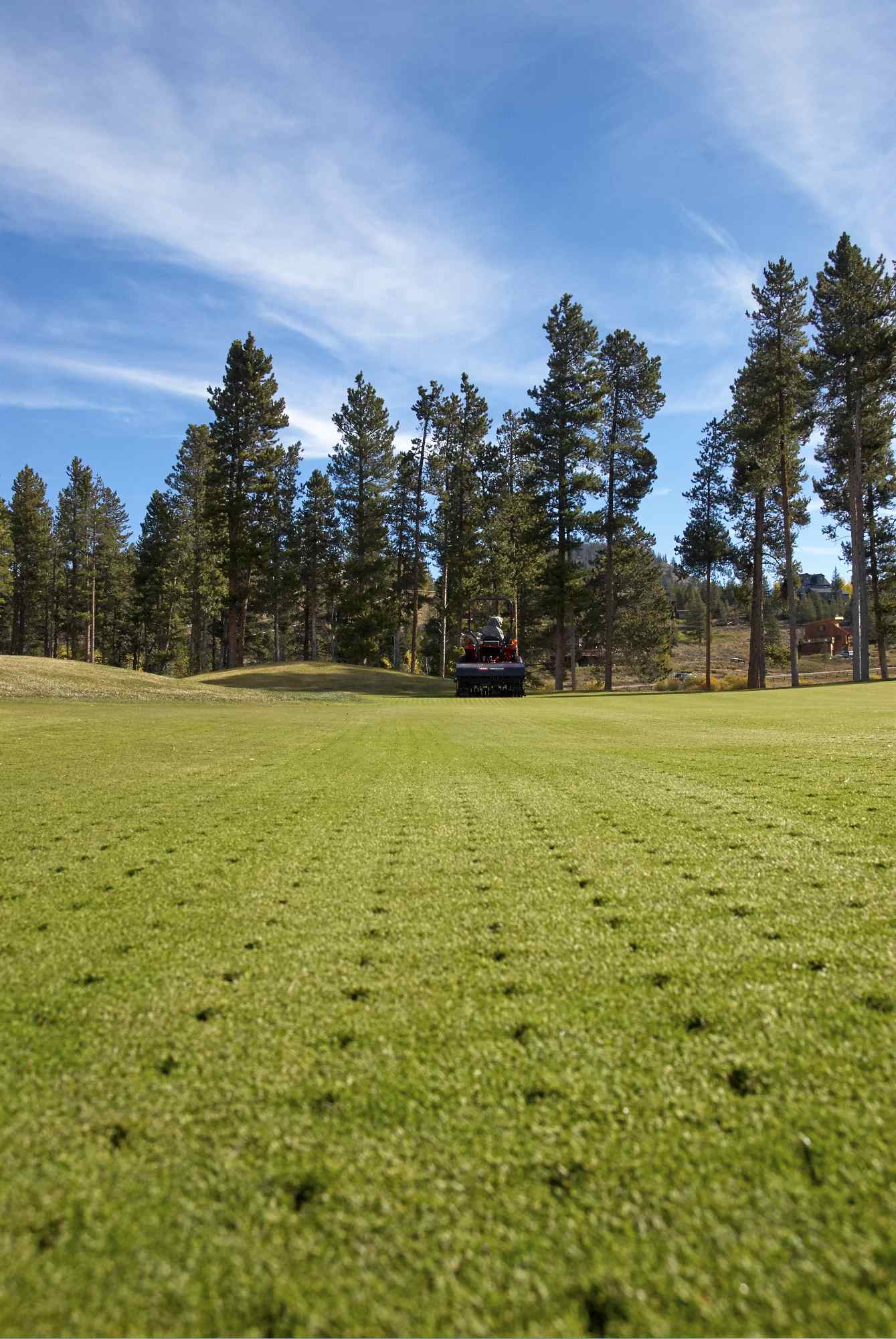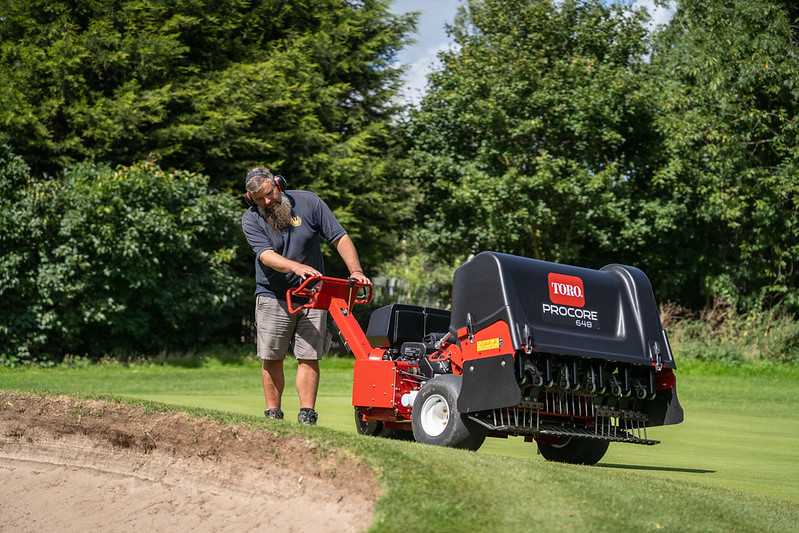What matters most in greens aeration?
From the agronomy side, a well-designed aeration programme ensures the most efficient movement of water, nutrients and air through the soil profile to encourage deep, dense rooting for a firm, consistent playing surface. From the operational side, it’s critical to get that playing surface back in operation as quickly as possible with minimal disruption to play — and therefore revenues.
The agronomy side
“Though the need for aeration is extremely difficult to justify when the greens are looking great, if neglected, the resulting problems will slowly increase and the greens will start to deteriorate,” says greenkeeping industry agronomist, Bruce Jamieson.
Fortunately, the need for aeration and the way in which it is done have evolved to a point where both are now better understood and more effective. There are basically two types of aeration:
- Core or deep-tine aeration involves pulling larger plugs out of the soil, followed by topdressing. This practice is recommended during periods of vigorous growth. It can be somewhat disruptive to operations because it does require some recovery time, but the benefits are worth the time invested.
- Needle or solid-tine aeration involves punching very small holes in the turf and dusting in a small amount of sand. This practice opens the soil without removing a core to increase gas exchange and drainage at the root zone during periods of high stress. Disruption is minimal because you can play straight after it’s been done. In addition, with regular solid-tine aeration, you may not need to do deep-tine aeration as often.
Before aerating the greens, course management must assess the course and decide what problems need to be addressed and/or what goals need to be achieved. For example, compacted soil with very limited thatch will require a different solution than soil with a thicker layer of thatch.
Done correctly, aeration offers many benefits (see table). But it must be implemented regularly throughout the year at varying depths to deliver all of the benefits listed here. That’s why it’s so important to choose the right solution for your course conditions and take steps to minimise the time required to complete the aeration process.
The operational side
There’s no question that healthier turf ultimately benefits players by providing a quality surface on which to play. The challenge comes when aeration disrupts your operations, from playability to corporate events.
Some disruption and recovery time is inevitable at times when core aeration is the best course of action. But there are ways to minimise the impact on operations.
Equipment such as the Toro® ProCore® 648 pedestrian aerator can aerate 18 greens in about 7 hours, thanks to its efficient 122 cm coring swath. The unique design puts the wheels in front of the aeration head so operators can make pass after pass without running over cores or freshly aerated turf. This prevents damage to the turf and the fresh holes, and makes cleanup easier. RotaLink™ geometry also ensures tines remain vertical to cut precise holes rather than tearing through turf, which helps shorten recovery time.
Together, these advantages add up to increased productivity to return the course to playing condition as quickly as possible.
“The Pro Core 648 is an integral part of most of our venues,” says Eddie Adams, Senior Tournament Agronomy Consultant for the European Tour. “It has provided turf professionals across the globe with an aeration machine that is both reliable and flexible, allowing this essential part of turf management to be carried out on a regular basis with minimal surface disruption.”
“The 648 is a cornerstone of any golf course machinery fleet,” Adams adds. “Combined with other recognised turf management practices, it provides a solid foundation that allows us and the host venue to present firm, true and consistent putting surfaces for a Tour event.”

Communicate about your aeration plan
In addition to balancing turf health and operations, it’s important for the general manager, head greenkeeper and director of golf/PGA professional to communicate with each other regularly in order to deliver a consistent message to members and players.
Be proactive and make sure players understand why aeration is necessary, how it will benefit them and what is being done to return the course to play as quickly as possible. By keeping them informed, you can manage expectations and keep their experience as positive as possible.

The Toro Procore 648 is a cornerstone of any golf course machinery fleet.